- Author Matthew Elmers [email protected].
- Public 2023-12-16 21:49.
- Last modified 2025-01-24 09:17.
For more than half a century, the main pistol of the US Armed Forces (AF) has been the classic model - Colt M1911A1 caliber 11, 43 mm (cartridge.45 ACP) designed by John Moses Browning. This pistol is so widespread in the United States that it can be considered one of the symbols of America. The Colt M1911 pistol survived two world wars, the Korean and Vietnam wars and many other local conflicts.
One of the advantages of the Colt M1911 pistol is the high stopping effect of the.45 ACP cartridge. Even in our time, despite the huge number of more modern models, pistols such as Colt M1911, produced by various manufacturers, are in great demand and are used for self-defense and practical shooting.


However, in the second half of the 20th century, the Colt M1911 ceased to meet modern requirements. It uses a single-action mechanism that does not allow self-cocking firing and a small number of cartridges in a single-row magazine. In this regard, the US armed forces in 1978 began work on the selection of a new pistol to replace the Colt M1911 pistol and the Smith & Wesson M.15 revolver.
Another reason requiring the replacement of Colt M1911 pistols was the standardization of the 9x19 cartridge as a single NATO pistol cartridge (cartridge M882).
Just as in Russia, many oppose the replacement of the Makarov pistol in the army, believing that its characteristics fully satisfy the RF Armed Forces, so in the United States there were a huge number of opponents of the new army pistol. The invitation to participate in the competition of foreign arms manufacturers also aroused rejection.
Nevertheless, both American and European companies were invited to the competition, which took place in 1978-1980. From 25 samples of pistols from various companies were selected - Smith & Wesson (USA) with pistols model 459 and 459A, Cold Industries with SSP pistol, Beretta USA Corp. with the M-92 pistol, the Fabrigue Nationale company with the FN HP and BDA 9 pistols and the Heckler und Koch (HK) company with the P9S, VP70 pistols and the PSP automatic pistol.
In the event of the victory of European manufacturers, they had to organize production in the United States.
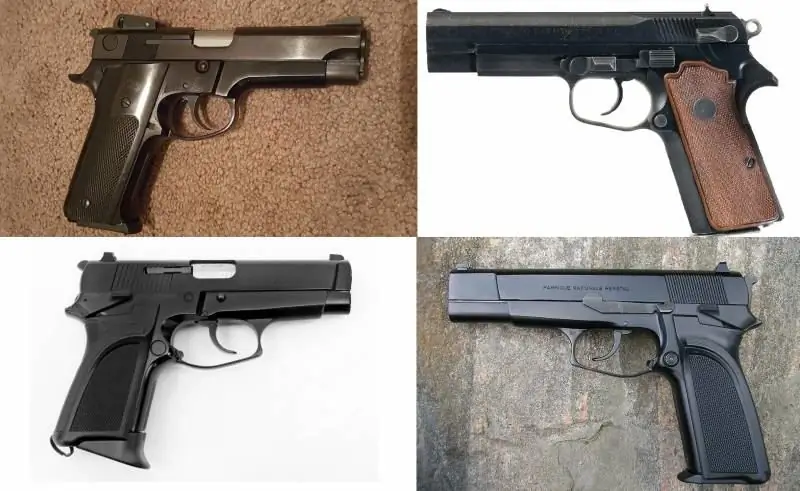

The pistols provided for the US Army pistol competition by Heckler und Koch had a rather original design.
The HK P9S pistol used an automatic semi-breechblock and braking with a pair of rollers like the G3 rifle. The HK VP 7 pistol was built on an advanced plastic frame for its time according to the automatic blowback scheme, which is rarely used in pistols chambered for a powerful cartridge. The firing trigger is cocked by pressing the trigger before each shot, which increases the effort and reduces the accuracy of the fire.
And in the NK PSP (P7) pistol, an automatic with a semi-free breech and braking with powder gases discharged from the barrel was used. The percussion trigger of the PSP pistol is equipped with a cocking lever located in front of the weapon grip. When the handle is gripped, the lever moves back, cocking the mainspring of the striker; when the lever is released, the striker is removed from the combat cocking.

In general, one can note the desire of the Heckler und Koch company for non-standard solutions. Pistols Smith & Wesson, Cold Industries, Fabrigue Nationale and Beretta had a classic design, however, according to the test results, none of the pistols showed the necessary characteristics, primarily in terms of reliability in difficult conditions.
Based on this, a new competition was announced in 1981, to which pistols that showed the best results in previous tests were admitted. All applicants for the role of a US army pistol had to use a 9x19 cartridge, a self-cocking trigger, and increased-capacity magazines.
The second competition considered pistols Smith & Wesson model 459, Beretta M-92SB, Browning BDA-9P, Heckler und Koch P7A13 (modernized PSP / P7) and SIG-Sauer P 226. The final was again the Beretta M-92SB pistol, but in the end neither he nor the other contenders, again completely satisfied the military.
In addition, the American Congress put pressure on the military due to the significant financial resources required for rearmament. The manufacturer of the original Colts, Cool Mfg Inc, offered a cheap alternative to repair and upgrade all 418,000 Colt M1911A1 pistols in service with 9x19 caliber. In fact, most of the pistol was changing - the barrel, the bolt, the magazine, the ejector, the reflector, the shutter stop. However, the inspection showed that over 40% of the Colt M1911A1 pistols are in such a worn-out condition that their modernization is impractical, and therefore, the decision to switch to a new pistol was finally made.
The third stage of competitive testing was promptly conducted by the US Army between April and September 1984. Two pistols withstood the tests - the upgraded Beretta M-92F and SIG-Sauer P 226. Ultimately, according to official data, the lower cost of the Beretta M-92F pistol tilted the military's choice in favor of this pistol, and in January 1985, the pistol was officially announced. Вeretta M-92F as a standard model of personal weapons for all branches of the US armed forces under the M.9 designation. At the first stage, an order was formed for 377 965 pistols.
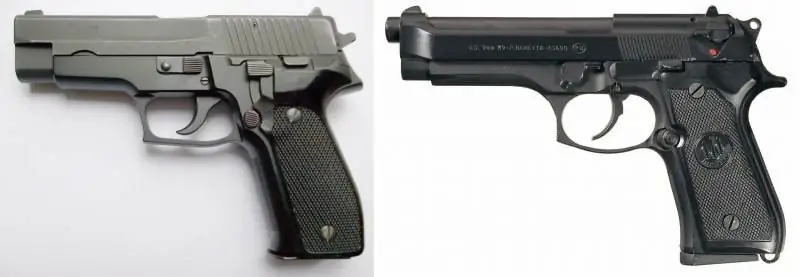
However, in 1987, a contract with Beretta USA Corp. was suspended after several accidents in which several shooters were injured as a result of the destruction of the bolt. By this time, about 140,000 pistols had already been produced. Beretta USA Corp. explained the breakdown of the shutters by the simplification of the manufacturing technology in mass production, and recommended changing the shutter after 3000 shots, which of course did not suit the US Army.
The Beretta pistol incidents gave Smith & Wesson reason to request an additional tender. Re-tests were carried out in August 1988. Smith & Wesson participated with an upgraded M.459 pistol, SIG-Sauer with a P 226 pistol with improved bolt guides, and Beretta USA Corp. presented the M92FS pistol with a modified bolt. The new player was Sturm Ruger & Co with the P-85 pistol.
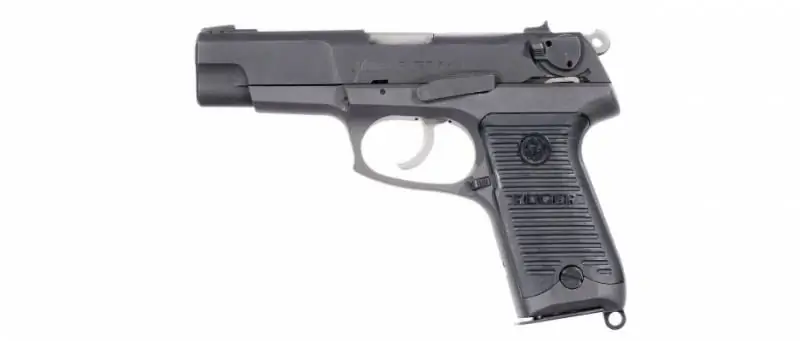
According to the test results, all competing samples were again rejected, and with Beretta USA Corp. a new contract was signed for the supply of 500,000 M.9 pistols in addition to those previously purchased.
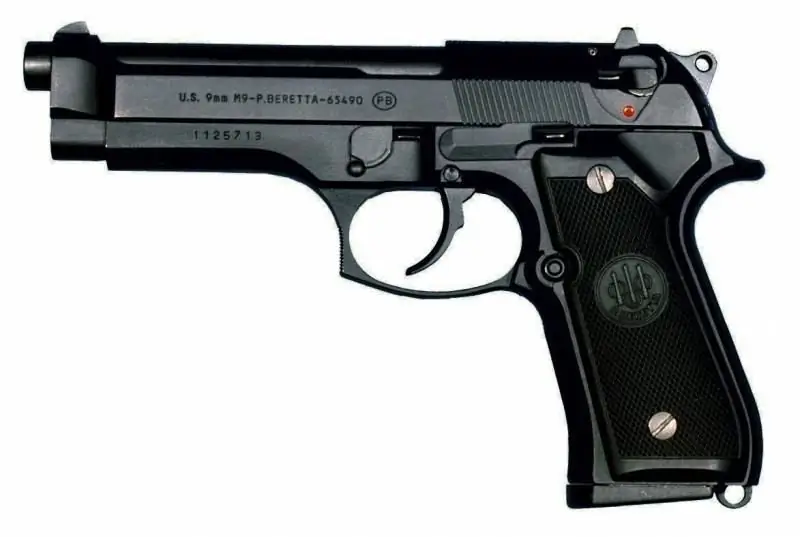

After the final adoption of the Beretta M.9 pistols, the issue of the army pistol was removed from the agenda in the US Army for a long time.
For more than twenty years of service, the Beretta M.9 pistols, as part of the equipment of the American military, have probably visited all the hot spots of the planet. During this time, when operating in various climatic conditions, the Beretta M.9 pistols have shown themselves to be a reliable and high-quality weapon.
In 1989, the US Special Operations Command (SOCOM) took care of the choice of a new pistol for their specific needs. They were not satisfied with the stopping effect of the 9mm cartridge; preference was given to the.45 ACP caliber previously used by the US Army. Perhaps the 45 caliber turned out to be more preferable given the need for frequent use of silenced weapons. The volume of the shot can be significantly reduced only if the firing is carried out with subsonic ammunition. In this case, the large mass of the 11, 43 mm bullet allows for a sufficiently high lethality of the weapon-cartridge complex, when using a silencer and a subsonic bullet velocity.
At the competition for a promising pistol for special operations forces (MTR), only two options were considered - a modernized pistol based on the classic Colt M1911 model and a new pistol from the German company Heckler und Koch based on the HP USP model. The competition was officially launched in 1991, and in 1996, Heckler und Koch had already begun supplying a MTR pistol under the official designation Mark 23 Model 0 US SOCOM Pistol.
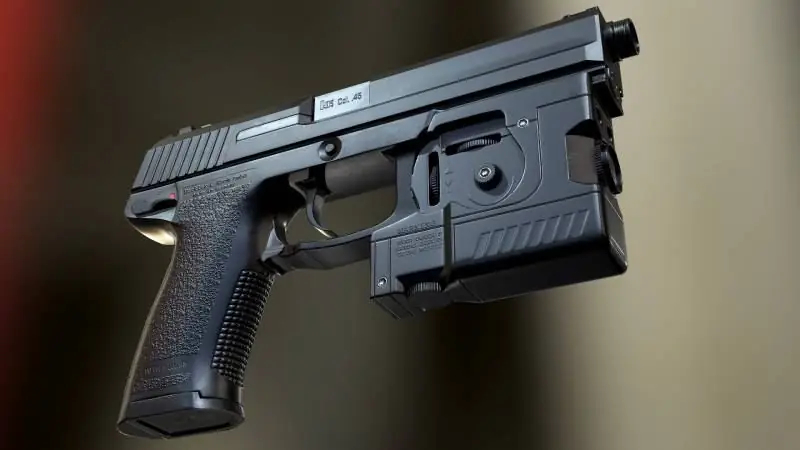
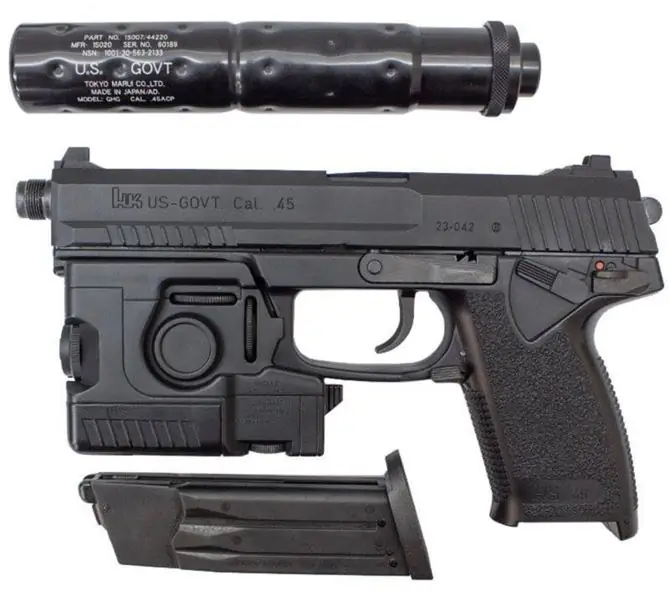
The Mark 23 Model 0 US SOCOM pistol is a complex that, in addition to the pistol itself, also includes a silencer and an aiming unit. The aiming unit consists of a built-in tactical flashlight and two laser designators, one of which operates in the visible range, and the other in the infrared range, for use in conjunction with a night vision device.
The Mark 23 pistol design is based on the HK USP pistol. The frame of the gun is polymer, the casing-shutter is made of chromium-molybdenum steel, which is then treated with nitriding and oxidation to protect it from corrosion. The pistol frame and controls are optimized for gloved shooting.
The two-row magazine holds 12 cartridges of 11, 43 mm caliber. The pistol can fire ammunition with an enhanced charge. USM trigger type, double action, with a trigger force with a pre-cocked trigger 2 kg, in self-cocking mode 5, 5 kg. There is a double-sided safety switch with two on / off positions. In front of the fuse, on the left side of the frame, there is a lever for safely triggering the trigger from the combat cocking.
The service life of the Mark 23 pistol is 30,000 rounds. Pistol length 245 mm, width 39 mm, height 150 mm, weight without cartridges 1100 g. The Mark 23 pistol is very large and quite heavy, which is why many fighters, when given the choice, prefer the less massive HP USP Tactical pistol.
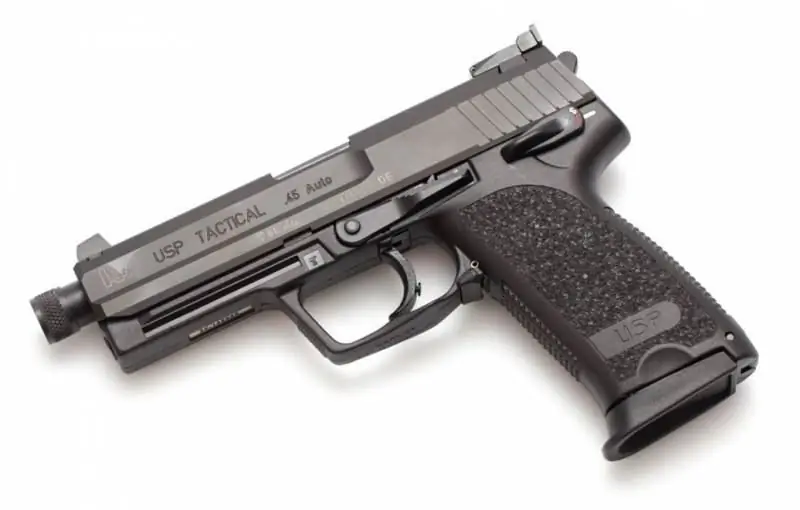

Thus, according to the results of a long selection, the US armed forces, in the period from 1988 to 1996, received at their disposal both the main army pistol and a pistol for special forces.
You can pay attention to the fact that approximately a similar practice has developed in the Russian armed forces, where the Yarygin pistol was adopted for the army, and the special forces actually preferred Serdyukov's "Gyurza" self-loading pistol for a more powerful cartridge. However, if in the United States the emphasis is on stopping action, then in Russia they prefer increased armor penetration.
The process of choosing an army pistol by the US Army stretched out for 10 years, while the MTR met in 5 years and held a competition without unnecessary scandals and delays. In the next article, we will look at the procedure for choosing a new army pistol in the United States and the current state of this issue.






